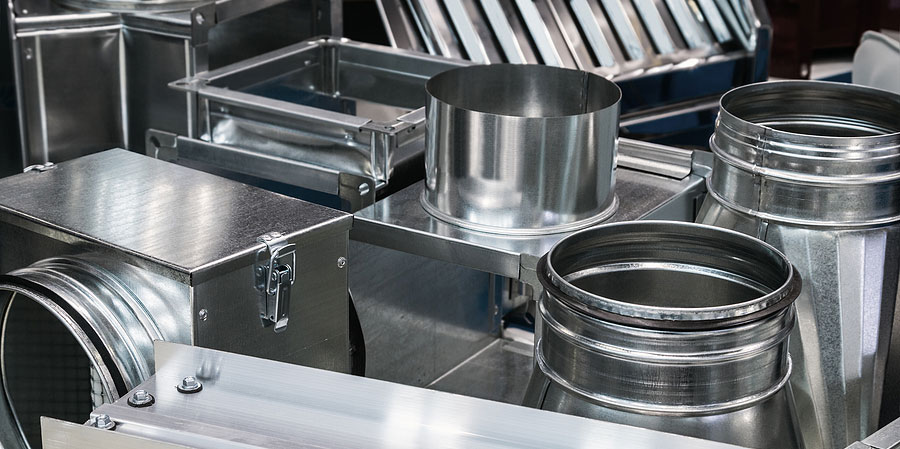

Research shows 20-30 percent of the air moving through ductwork systems gets lost due to leakages and poor connections. Such loss reduces a building’s heat resistance and the efficiency of thermal insulation increasing its overall heating demands. Inspecting HETO fittings for airtightness is critical to identifying leakages in a building’s duct system. Airtightness is a function of several factors of a ductwork system, such as design, installation, and construction, to mention a few. We look at how each factor affects the airtightness of commercial ductwork.
Ductwork Design
The ductwork design affects the system’s ability to maintain airtightness. The main dilemma for many contractors is whether to install rectangular or round ductwork. Modern ductwork systems are shifting towards round systems, as they are presumed to promote airtightness compared to their counterparts. Here are other advantages of round systems:
- Fewer fitting components: Connecting two spiral ducts requires one fitting only. On the contrary, rectangular ducts use separate flanging systems, which increase the likelihood of developing air leaks. Also, round ducts are available in any length less than three meters while rectangular ducts are limited to a two-meter length only. This means they need more connections than round heto fittings.
- Simple installation process: The installation process is simpler and faster while that of a rectangular system is more involving.
- Lower installation cost: Countries that have used round ducting for a long time charge lower rates. By comparison, the overall installation cost of a duct system built using a circular duct is lower than one with rectangular ducting.
- Tight installation: Contemporary spiral ductwork systems are larger, hence need to be three times tighter than rectangular duct systems
- Reduced pressure fluctuations: Round fittings are less likely to experience fluctuations in pressure because their components (branches and elbows) are more aerodynamically designed.
- Reduced noise: Generally, round fittings for ducts are stiffer than rectangular ones. As such, less sound is transmitted through the duct wall, minimizing noise.
The only advantage of a rectangular duct is that it can be widened for use on the same cross-sectional area, making it easy to install them in buildings with limited room heights. This means they can be installed during the early stages of installation when the airflow ducts are large. However, as the airflow gets distributed to other systems, round HETO fittings should be used.
Ductwork Construction
The joints and seams selected should be compatible with the type of duct fittings required and the maintenance work performed on the system. During the construction stage, the airtightness of individual heto fittings depends on their design and assembly. As such, it is essential to use components with the correct fit and apply enough sealant to make a satisfactory joint. A poor fit compromises the system’s airtightness and is difficult to remedy by applying more sealant. It explains why some contractors opt for factory-fitted sealing devices like clips and gaskets. While such components minimize the installation time, it is essential to check the individual components for airtightness.
Installation Method
Four methods are used to tighten parts and components of ductwork systems: tapes, gaskets, aerosol sealants, and sealing compounds. The ideal sealing method should be based on a range of factors including the type of ductwork, maintenance procedures, leakage status, and available installation space among others. That is why sealants are often used to install round ducts while gaskets are more suitable for making flange joints in new installations. Aerosol-based sealants, on the other hand, are commonplace for sealing the ends of the ducts to eliminate the need to work on other building elements. As such, they are more suitable for sealing flexible and rectangular ducts. The sealants enhance the airtightness of the ductwork without minimizing the thickness of the lining.
Part and Components
When installing HETO fittings, particular attention should be given to areas more likely to develop leakage. These areas include:
- At the terminal device
- At the seams and joints
- Leakage caused by physical damage or unnecessary holes
- At the air handling unit
If the contractor is not using pre-fitted sealing devices, the entire installation process could be more involving to avoid leakages at the joints. Most inspections show that significant leakages occur at the air terminal devices due to poor connections on oval duct fittings and sometimes internal cracks. As such, particular attention should be paid to these parts.


